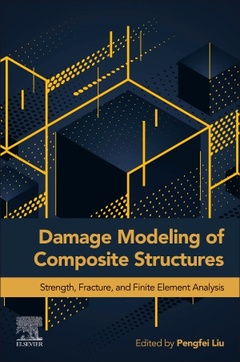Description
Damage Modeling of Composite Structures
Strength, Fracture, and Finite Element Analysis
Author: Liu Pengfei
Language: English
Subject for Damage Modeling of Composite Structures:
396 p. · 15x22.8 cm · Paperback
Description
/li>Contents
/li>Biography
/li>Comment
/li>
Damage Modeling of Composite Structures: Strength, Fracture, and Finite Element Analysis provides readers with a fundamental overview of the mechanics of composite materials, along with an outline of an array of modeling and numerical techniques used to analyze damage, failure mechanisms and safety tolerance. Strength prediction and finite element analysis of laminated composite structures are both covered, as are modeling techniques for delaminated composites under compression and shear. Viscoelastic cohesive/friction coupled model and finite element analysis for delamination analysis of composites under shear and for laminates under low-velocity impact are all covered at length.
A concluding chapter discusses multiscale damage models and finite element analysis of composite structures.
- Integrates intralaminar damage and interlaminar delamination under different load patterns, covering intralaminar damage constitutive models, failure criteria, damage evolution laws, and virtual crack closure techniques
- Discusses numerical techniques for progressive failure analysis and modeling, as well as numerical convergence and mesh sensitivity, thus allowing for more accurate modeling
- Features models and methods that can be seamlessly extended to analyze failure mechanisms and safety tolerance of composites under more complex loads, and in more extreme environments
- Demonstrates applications of damage models and numerical methods




